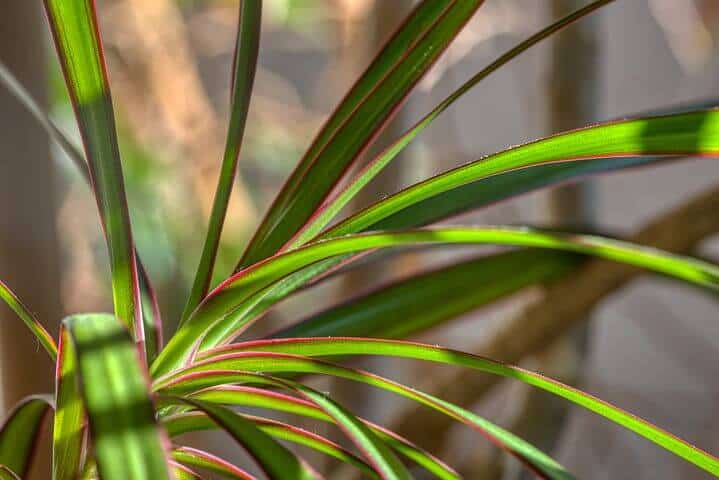Last Updated on March 15, 2023 by a Friendly Gardener
Resembling a miniature palm tree, the Dragon Tree is an attractive house plant that requires minimal care. Botanically named the Dracaena marginata, its grass-like spiky striped foliage looks somewhat like mini, red-edged swords. A native of Madagascar, it’s now a global favorite because of its low-maintenance needs and delightful appearance.
The name “Dracaena” is a female dragon in the Greek language. Red sap emerges if stems are cut, and if the sap thickens, it Is said to appear as the blood of dragons.
About the Dracaena Marginata

If you are looking for an attractive, but indestructible houseplant, the Dragon Tree is a viable candidate. It is particularly indicated for beginner gardeners. As a drought-tolerant plant, it will not require watering daily.
A slow grower, it can be cultivated year-round. In a warm climate, it can be easily cultivated outside, and grow as much as 20 feet in height. This plant does produce flowers in the spring that are in the form of small white blooms. Indoors, with adequate pruning, it can reach six feet tops. The Dracaena will generally not produce flowers when cultivated inside.
Dragon Tree Plant Care
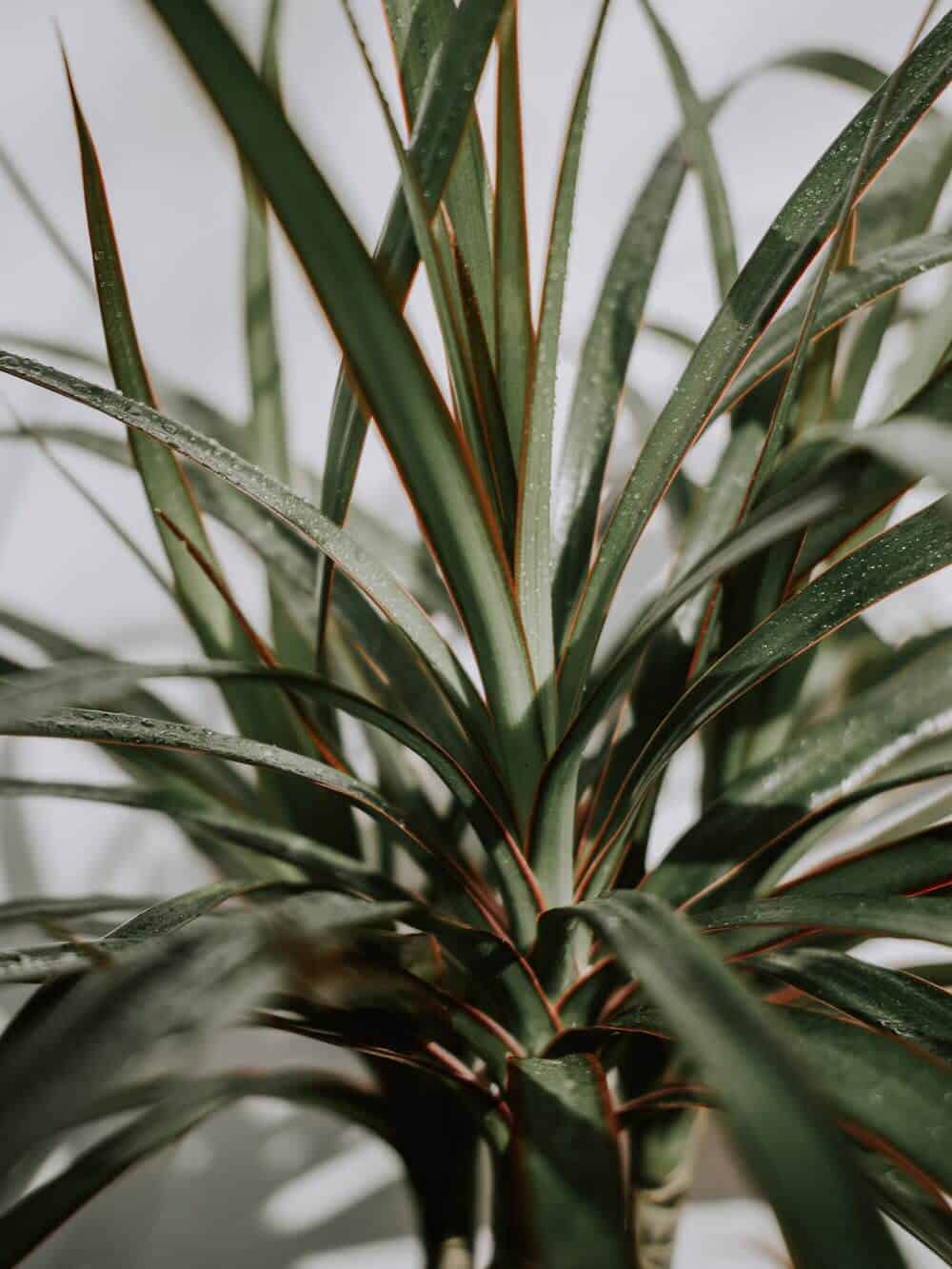
Soil
For a potted plant, use a loose, well-draining potting mix. Soil should be loamy blended with a bit of peat moss for moisture retention. The plant’s pot requires sufficient room for the extensive root system and a good number of drainage holes.
Light
Light exposure needs to be bright but indirect. The Dracaena will adapt to medium or lower levels and still be fine. Direct sunlight can lead to scorching of the leaves.
Water and Humidity
Being drought-tolerant, the risk t the Dracaena is overwatering. Wait until the top half of the soil bed dries before watering which might be weeks depending on the environmental climate. Watering once a week is pretty standard. Water thoroughly for the root system. Reduce watering in the winter.
Temperature
This plant tolerates various temperatures but prefers temperatures between 70° and 80° Fahrenheit.
If the plant’s leaves suffer from brown tips, it may be a case of overwatering or the quality of the water. Water may contain too much fluoride or salt causing discoloring. Tap water with fluoride should be avoided, so opt for distilled water or rainwater. Yellow leaves indicate a thirsty plant.
The dragon tree likes normal humidity. For an arid climate or dry air, mist your plant with a spray bottle twice weekly.
Feeding
Dragon trees do not require much feeding as they are very slow growers. Old leaves are shed constantly in favor of new growth. This plant does not require fertilization. Should you want to provide a nutritional boost in the spring, use a quality liquid fertilizer diluted to half-strength and continue to feed twice monthly through summer.
Pruning
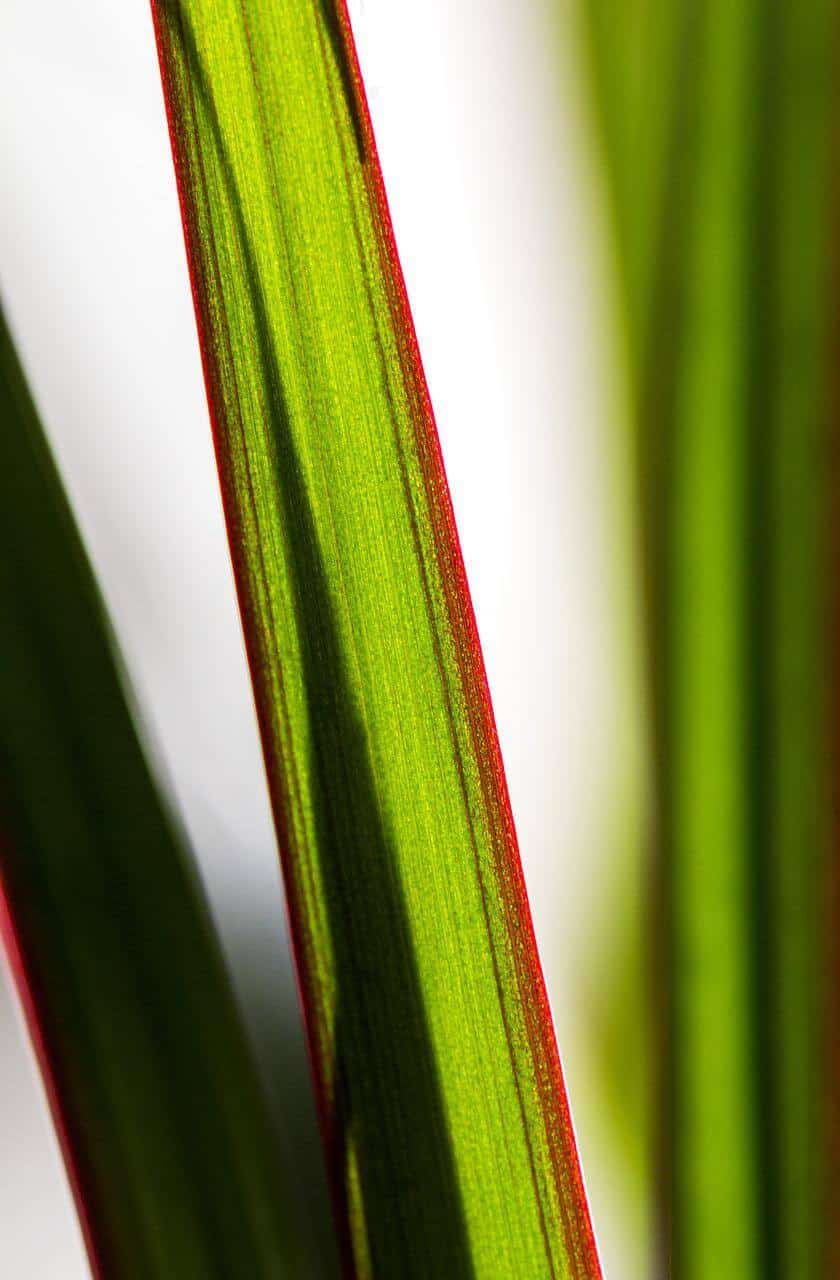
Dracaenas lose lower leaves leaving a bare trunk. Upper foliage will appear as a denser umbrella. Outdoor trees do not require pruning, but houseplants will grow more foliage if pruned in late spring and early summer.
- Trim excessively long growth with a 45° angled cut on the stem where you want to prune. An angled cut prevents water from collecting at the cutting point.
- Trim stems to stimulate growth. Dragon trees grow from the tips of stems so the trunk may appear bare. By pruning a stem, two stems should grow back at the cut.
- Dead stems should be removed as well as discolored foliage.
- Water after pruning to moisten the soil bed. This aids the plant’s recovery after pruning.
Repotting
Repotting will be necessary to afford the root system more space and offer new nutrition. When roots bulge from the sides, it’s time for a repot. You will probably be able to wait and repot every second or third year as these plants are such slow growers. The new container should be no more than two inches wider than the root ball.
- Gently remove the plant from its container.
- Remove old soil from the roots. Position the plant in the middle of the new pot.
- Fill with new potting soil and pat the soil bed gently.
- Water the plant thoroughly and position your Dracaena in bright indirect sunlight.
Dragon trees require from two to four weeks to recover from transplant shock.
Pests, Diseases, and Problems
Shedding foliage is normal, but if it appears bare, it may be stressed. Check for overwatering at the bottom of the soil bed. If it is damp allow it to dry out. If there are signs of root rot, repot it immediately.
Drooping leaves can indicate both overwatering and underwatering. In the case of underwatering, give your dragon tree a shower allowing it to drain completely. The plant should revive within a day.
Brown foliage indicates temperature fluctuations. Your dragon tree does not like sudden or drastic temperature changes. Protect your plant from heating and air conditioning vents, as well as drafts. To remove brown tips, trim them off following the leaf’s shape.
The Dragon tree is at risk for thrips, spider mites, scale, and mealybugs. Mealybugs leave a cottony white deposit on the leaves. Spider mites arrive with warm temperatures and dry air. Scale insects are sapsuckers that will adhere to the leaves and stems. Mealybugs and scale can be removed manually and then treat your plant with organic Neem oil or insecticidal soap. For spider mites and thrips, use a jet water spray to remove insects and then treat them.
Dracaena Marginata Toxicity
The Dragon Tree is poisonous to dogs and cats, but not to humans. Cats are attracted to the leaves and like to nibble, as it resembles grass. Foliagecontainstoxic alkyds. If you suspect ingestion or see symptoms, get to a vet as soon as possible.
Symptoms of dragon tree poisoning include diarrhea, drooling, lethargy, loss of appetite, vomiting, general weakness or lack of coordination, face or mouth swelling, and irritation.
Dragon Tree Propagation
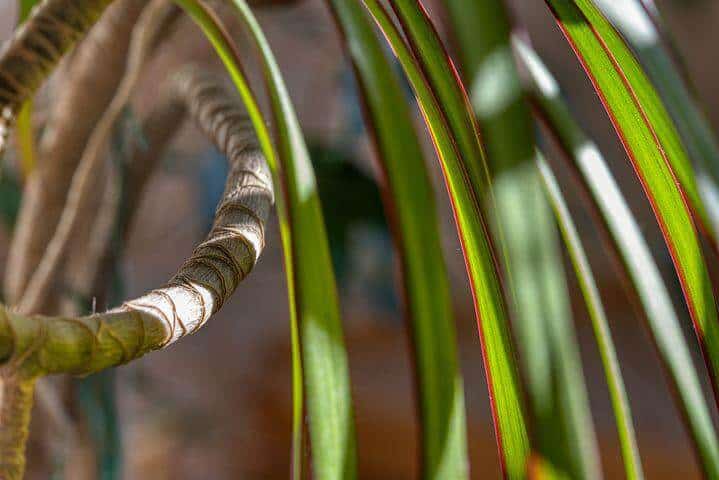
To propagate your plant, use stem cuttings to root in water. After approximately three weeks you’ll see roots sprout. Once roots have sprouted, you can transplant your tree to quality potting soil.
- Choose a stem to propagate.
- Trim it off at a 45° angle.
- Place it in a glass jar with water submerging only the stem. Foliage should not be in the water.
- Position the jar and cut in bright light and wait. No direct sunlight. Change the water every several days.
- Once roots appear, transfer your baby to a pot appropriate for the plant size with potting soil.
After transplanting, water and drain regularly.
A Final Word
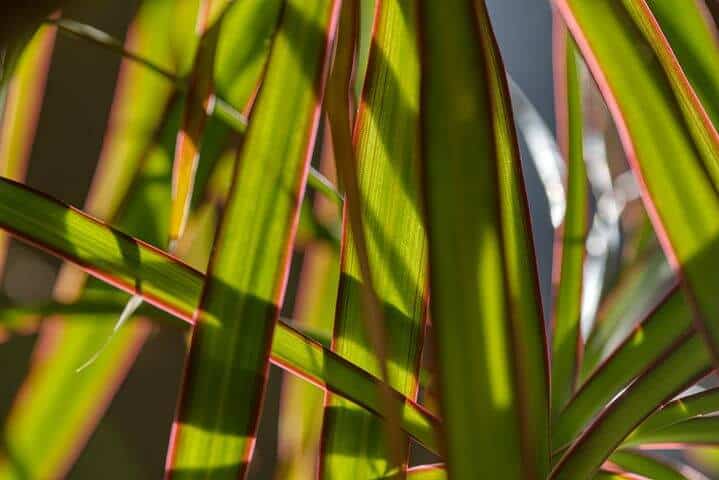
The dragon tree or Dracaena marginata is a truly beautiful houseplant that will make an attractive addition to any décor.
For beginner gardeners or those with a black or brown thumb, this is a chance to turn it green. The Dragon Tree is phenomenally easy to care for. Requiring just a bit of water, and generous indirect light, it is a hardy plant that can thrive in an ample range of temperatures.
As it looks like a miniature palm tree, you can add a bit of the tropics to any office, place of business, or room in your home. Because houseplant radiates happiness, it also makes a delightful gift, especially for those new to indoor gardening.

